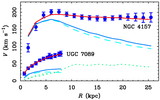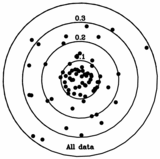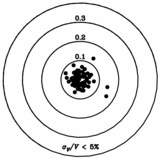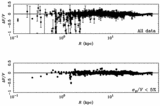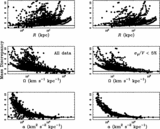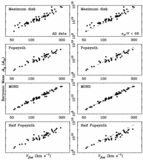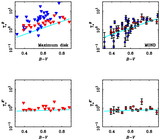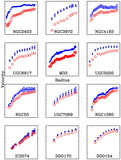Image Details
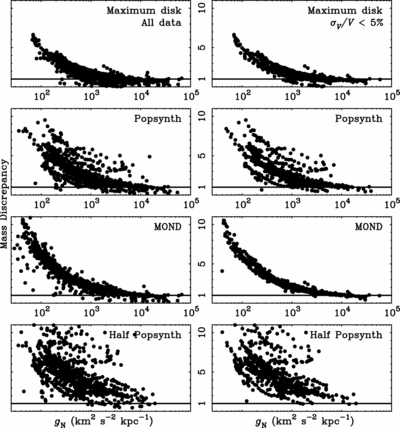
Caption: Fig. 5.
Mass discrepancy as a function of the Newtonian acceleration ﹩g_{\mathrm{N}\,}=V^{2}_{b}/ r﹩ predicted by the observed stars and gas for various choices of mass‐to‐light ratio. The top row of panels shows the result for maximum disk mass‐to‐light ratios. The second row of panels shows the mass‐to‐light ratios indicated by the ﹩B-V﹩ colors and the ﹩\Upsilon _{*}﹩‐color relation from the stellar population models of Bell et al. (2003b). The third row uses the MOND fit mass‐to‐light ratios (Sanders & McGaugh 2002). The result of adopting a lightweight IMF is illustrated in the bottom row by scaling the population synthesis mass‐to‐light ratio down by a factor of 2. The mass discrepancy is well correlated with the acceleration for any plausible (nonzero) choice of mass‐to‐light ratio. The rotation curves of a few individual galaxies can be discerned in the population synthesis rows, but the majority of the galaxies are indistinguishable in all cases. The scatter in this local relation is minimized for the MOND mass‐to‐light ratios, making them optimal in this respect even from a purely Newtonian perspective. The intrinsic scatter of the relation appears to be very small.
Copyright and Terms & Conditions
© 2004. The American Astronomical Society. All rights reserved. Printed in U.S.A.


